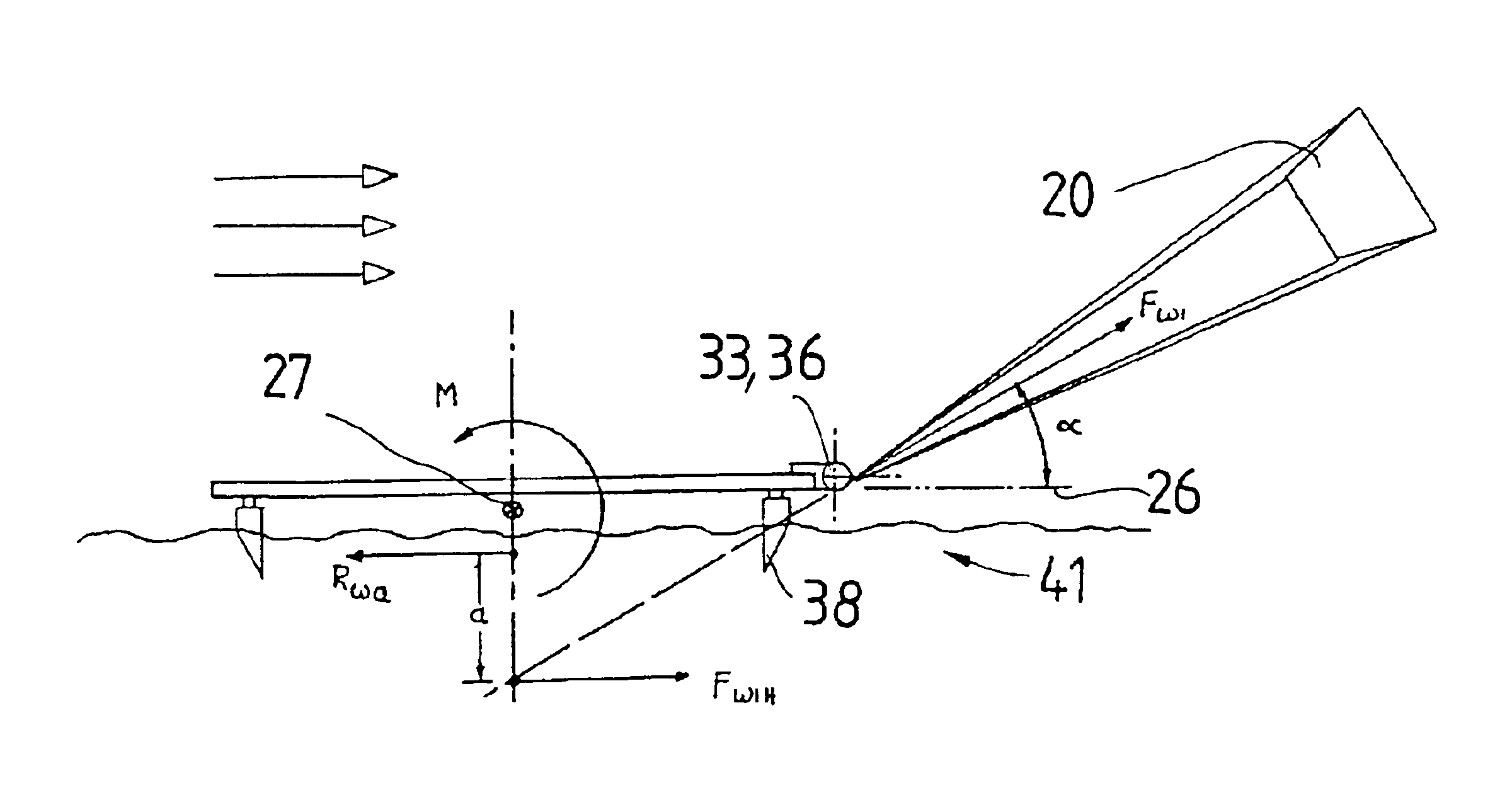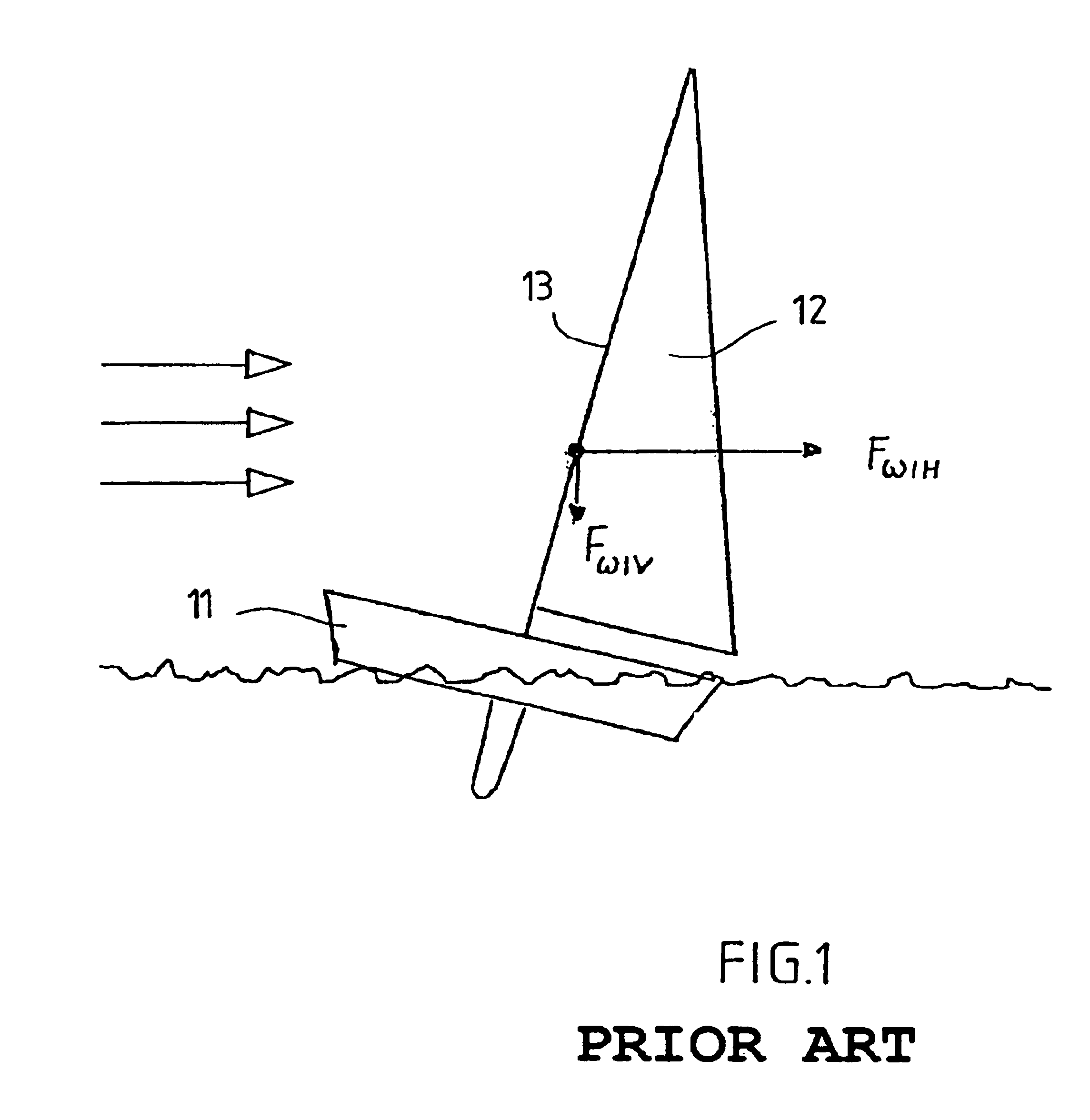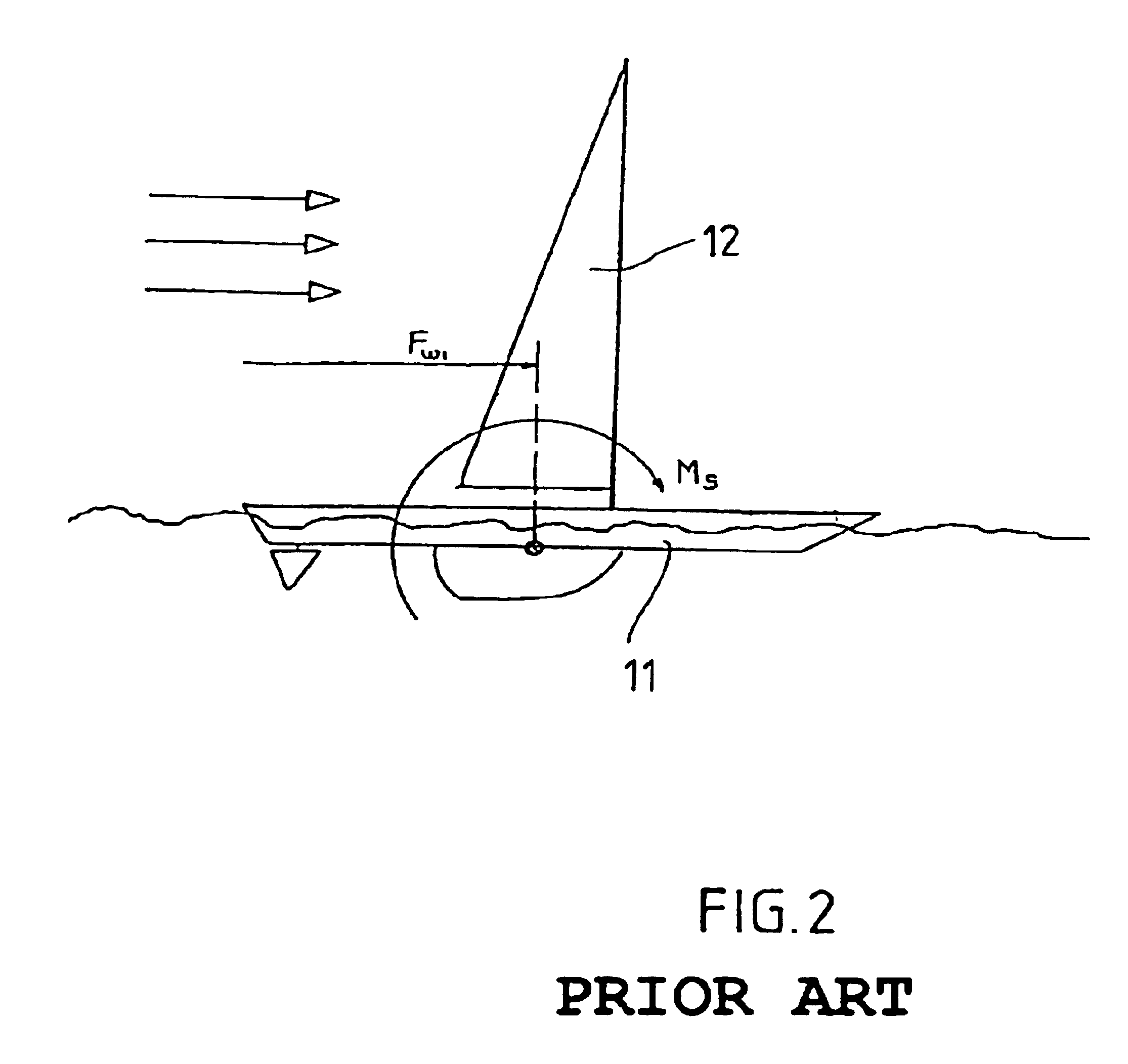Control device for steering kite on a boat
a control device and kite technology, applied in the field of vehicle control devices, can solve the problems of inability to control the kite, insufficient movement area of the attaching device for the steering kite, and inevitable capsize of the boat, and achieve the effect of high speed
- Summary
- Abstract
- Description
- Claims
- Application Information
AI Technical Summary
Benefits of technology
Problems solved by technology
Method used
Image
Examples
Embodiment Construction
[0032]In FIGS. 1 and 2 there are schematically represented the horizontal wind force FWIH and vertical wind force FWIV effecting on a sailboat and the inclination of the boat 11 resulting therefrom. Due to the wind force, the sail 12 attached in usual manner to a vertical mast 13 will incline the boat 11 at the wind averted side downwards. Therefore, it is always necessary to keep the boat essentially in the horizontal position in order to get a wind capturing area as big as possible. With too strong wind, this will not be possible even with greater counterbalances on the wind facing side, so that capsize becomes inevitable or a reduction of the sail area becomes necessary. As long as the wind comes from the back, there will also be generated an unfavourable torque MS for the propulsion of the boat 11 around its cross axis, as represented schematically in FIG. 2. This torque causes an immersion of the wind averted fore side, that is the bow side, such that with too strong winds the ...
PUM
 Login to View More
Login to View More Abstract
Description
Claims
Application Information
 Login to View More
Login to View More - R&D
- Intellectual Property
- Life Sciences
- Materials
- Tech Scout
- Unparalleled Data Quality
- Higher Quality Content
- 60% Fewer Hallucinations
Browse by: Latest US Patents, China's latest patents, Technical Efficacy Thesaurus, Application Domain, Technology Topic, Popular Technical Reports.
© 2025 PatSnap. All rights reserved.Legal|Privacy policy|Modern Slavery Act Transparency Statement|Sitemap|About US| Contact US: help@patsnap.com



